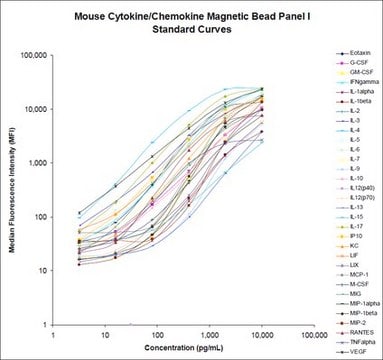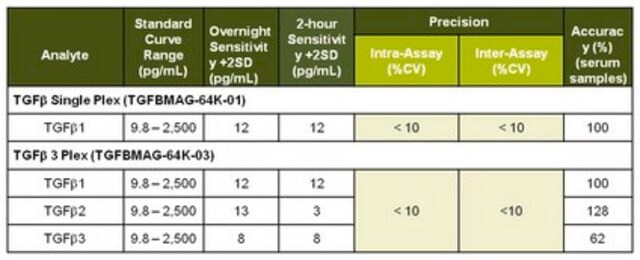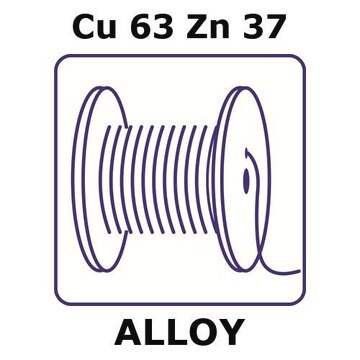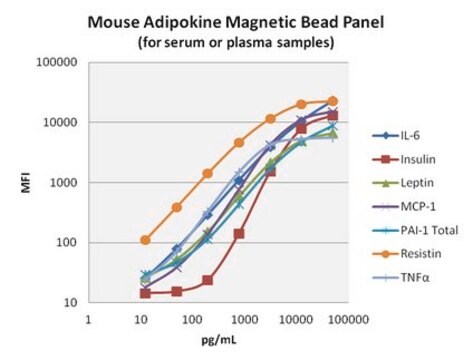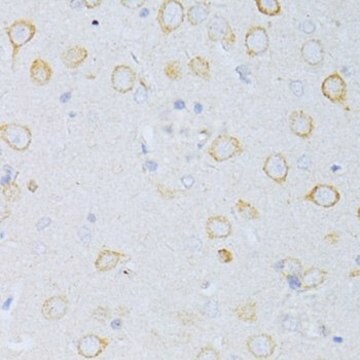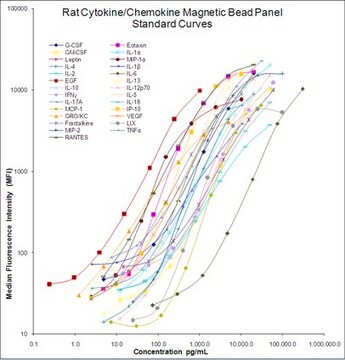MMMP3MAG-79K
MILLIPLEX® Mouse MMP Magnetic Bead Panel 3 - Immunology Multiplex Assay
MMP Bead-Based Multiplex Assays using the Luminex technology enables the simultaneous analysis of multiple MMP biomarkers in mouse cell culture samples.
About This Item
Recommended Products
Quality Level
species reactivity
mouse
manufacturer/tradename
Milliplex®
assay range
standard curve range: 12-50,000 pg/mL
(MMP-8)
standard curve range: 12-50,000 pg/mL
(proMMP-9)
standard curve range: 2-10,000 pg/mL
(MMP-3)
standard curve range: 49-200,000 pg/mL
(MMP-2)
standard curve range: 5-20,000 pg/mL
(MMP-12)
technique(s)
multiplexing: suitable
detection method
fluorometric (Luminex xMAP)
shipped in
wet ice
Related Categories
General description
MILLIPLEX® Mouse MMP Bead Panel 3, MMMP3MAG-79K, is a 5 plex kit to be used for the simultaneous quantification of any or all of the following analytes in tissue culture samples: MMP-2, MMP-3, MMP-8, proMMP-9, and MMP-12.
Panel Type: Cytokines/Chemokines
Specificity
Application
- Analytes: MMP-2, MMP-3, MMP-8, proMMP-9, MMP-12
- Recommended Sample type: cell/tissue culture supernatant or extracts
- Research Category: Inflammation & Immunology
Features and Benefits
Storage and Stability
Other Notes
Legal Information
Disclaimer
Signal Word
Danger
Hazard Statements
Precautionary Statements
Hazard Classifications
Acute Tox. 3 Dermal - Acute Tox. 3 Inhalation - Acute Tox. 4 Oral - Aquatic Chronic 2 - Skin Sens. 1
Storage Class Code
6.1C - Combustible, acute toxic Cat.3 / toxic compounds or compounds which causing chronic effects
WGK
WGK 3
Certificates of Analysis (COA)
Search for Certificates of Analysis (COA) by entering the products Lot/Batch Number. Lot and Batch Numbers can be found on a product’s label following the words ‘Lot’ or ‘Batch’.
Already Own This Product?
Find documentation for the products that you have recently purchased in the Document Library.
Our team of scientists has experience in all areas of research including Life Science, Material Science, Chemical Synthesis, Chromatography, Analytical and many others.
Contact Technical Service
